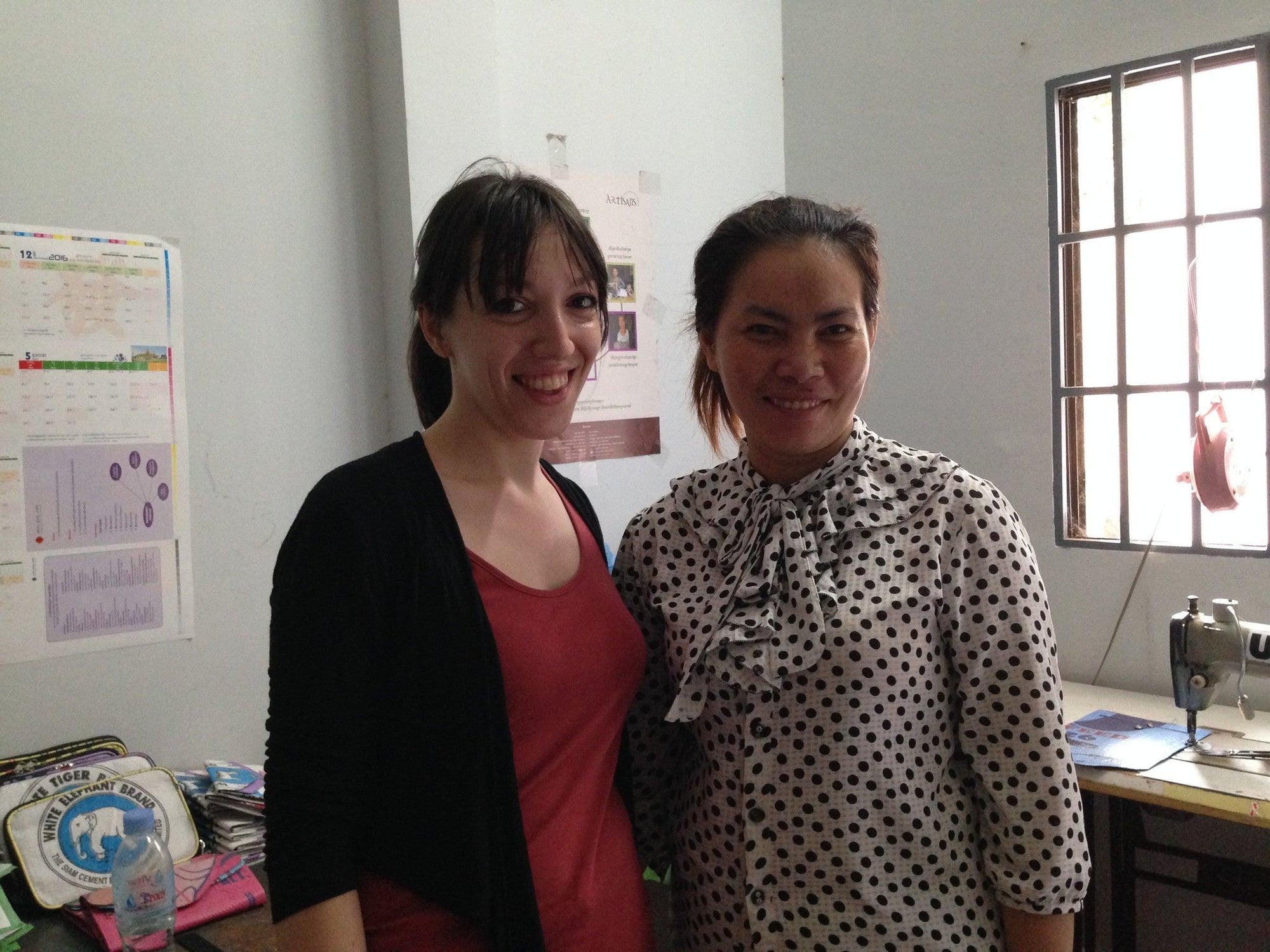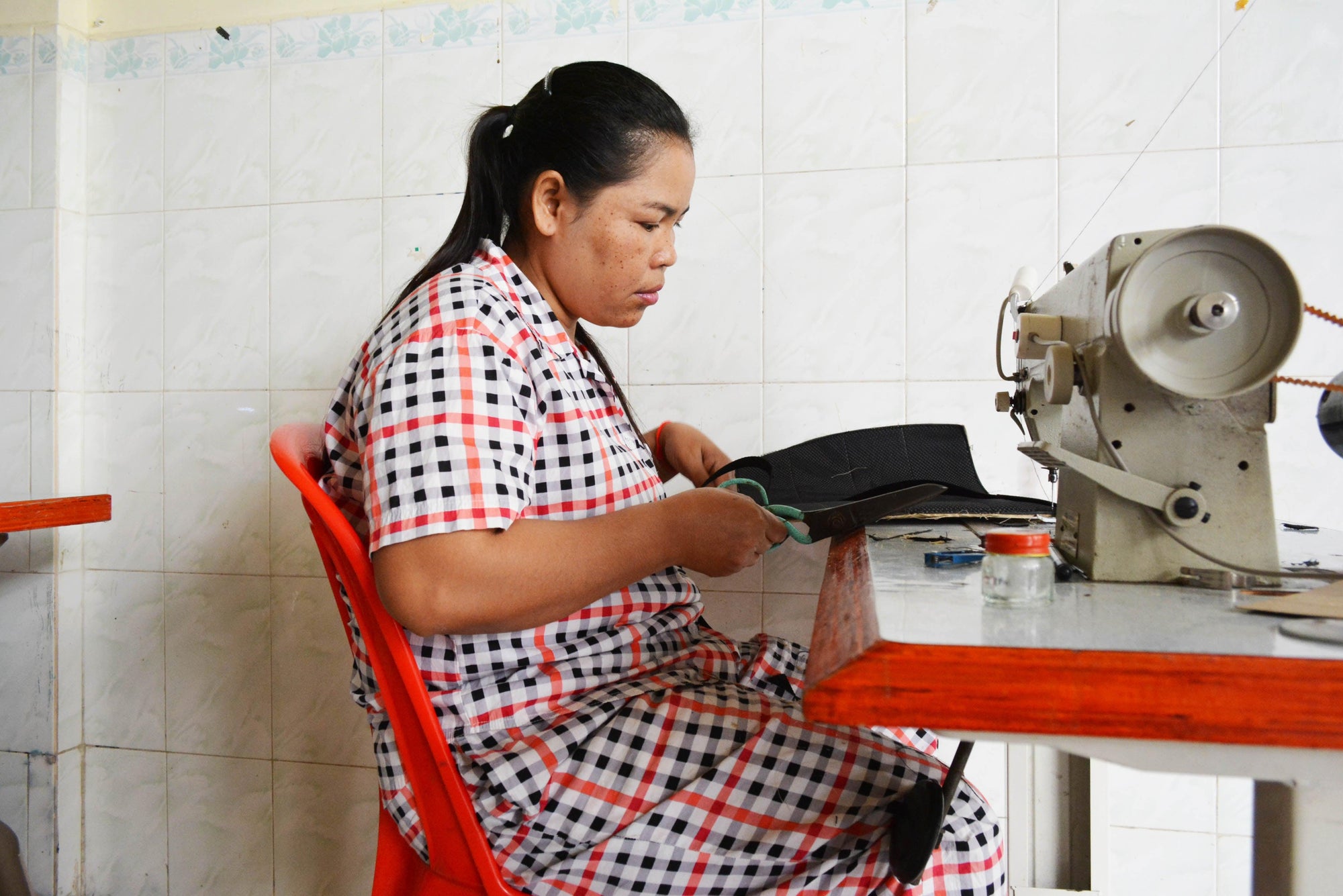We started Lost in Samsara, first and foremost, to reestablish our lost connection with the makers of our products. To go all the way with this, we regularly visit the artisans who work with our partner projects. Our destination this time: Phnom Penh in Cambodia.
Many of the items they make are crafted from upcycled cement bags. After spending a few days there, we realized what a great project this is because the bags are literally scattered all over the city, at various construction sites and beyond.
The city is still recovering from the scars of a brutal civil war that lasted until the 1990s. A stroll through the streets paints a clear picture of the long term damage those dark years have done. Cambodia has many landmine victims ... and to this day, has one of the highest landmine casualty rates in the world. It's nothing short of heartbreaking to see the number of amputees, some using only their arms to move on the pavement without the help of a wheelchair.
We spent two days getting to know Phnom Penh and its history. During that time we visited Tuol Sleng, a former high school used during the Pol Pot regime as a security prison and execution center and now functioning as a museum.
While trying to wrap our heads around it all, we started preparing to meet Vichet, the representative of the organization we collaborate with. During the ride on the local motor-remork, he told us more about life in Cambodia and his project. Since 2008, they've been training and creating opportunities for 49 mainly disabled people. They're able to work from their homes, in their own environment and at their own pace.
We went to visit two such artisans, who lived in a big block of flats not too far from the center of Phnom Penh. Seeing where they live and listening to their stories was emotional. We all know what fair trade is but witnessing it firsthand, in real life, is surreal.
Srey (Mrs. in Khmer) Mach, one of the artisans who lives on her own, greeted us with a big smile. She seemed excited to meet us and with the help of Vichet, she told us her story. She stepped on a mine when she was only 21. The accident left her without a leg. Now she works for two different organizations that provide her with enough work to sustain herself. She tells us while it took a while to adjust to her "new normal," she's happy now and really enjoys working from home. The conditions and the pay are drastically better than what people who work for garment factories receive. She seems shy, blushing from time to time while talking to us, so we break the ice by cracking a few jokes. She asks for a picture with us as a memento of the day.
The other artisans live on another floor in the same building. They also greet us with big smiles and show us what they're working on. Three of them are deaf and working on some paper crafts. Vichet explains how he provides them with the orders, the materials and machinery when necessary. And that the artisans are self-employed, paid a livable wage and offered constant training.
Next we go visit Mr. Chantha, a jewellery maker. He shows us his workshop located in one of the poorest areas on the outskirts of Phnom Penh. He tells us that he lost both his parents when he was little. His father was killed by the Khmer Rouge when he was only 8. With the help of an international NGO he received the training necessary to become a jewellery maker. For the past twenty years he has been doing what he loves and he now has enough work to reinvest in his workshop and buy the machines and the tools he needs to create his beautiful handicrafts. Mr. Chantha's work is special in many ways. He uses bullet cases and bomb shells to in his designs. It's incredible to see how symbols of destruction and so much suffering can be transformed into something beautiful; how the bullets that destroyed his family are now giving him the chance to sustain his new one.
Mr. Chantha shows us how he melts the bullets. He's a very joyful man and his English is very good. He also teaches, training young people how to make jewellery. He's extremely proud of his work and is continually smiling while telling us about it. His son Moss runs around while he explains how hard it is to sustain all of his family. But says he's determined to give his two children a better future.
On the way back to the hotel, we silently contemplate their resilience and unbroken spirits. It's something we’ll never forget.
Cambodia is a beautiful country geographically. But to us, the people are what make it most beautiful. Despite the struggles they face daily - the past that still has such an impact on their present, the rampant poverty and a government that too often overlooks their wellbeing - even the most disadvantaged Cambodians graced us with their big, beautiful smiles. Ones that have left an everlasting imprint on souls.








